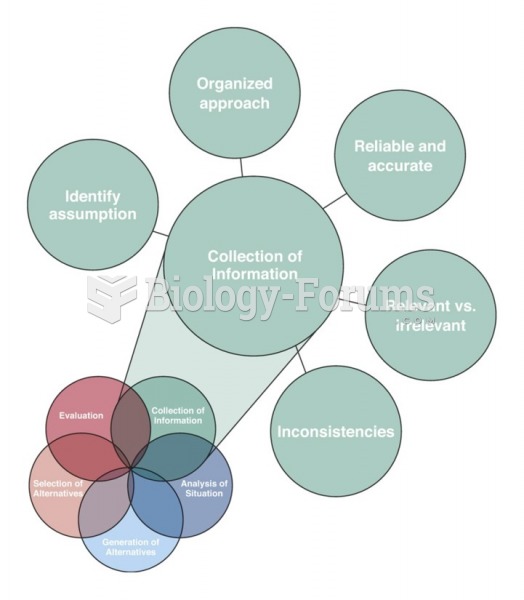|
|
|
Patients who have been on total parenteral nutrition for more than a few days may need to have foods gradually reintroduced to give the digestive tract time to start working again.
Each year in the United States, there are approximately six million pregnancies. This means that at any one time, about 4% of women in the United States are pregnant.
Tobacco depletes the body of vitamins A, C, and E, which can result in any of the following: dry hair, dry skin, dry eyes, poor growth, night blindness, abscesses, insomnia, fatigue, reproductive system problems, sinusitis, pneumonia, frequent respiratory problems, skin disorders, weight loss, rickets, osteomalacia, nervousness, muscle spasms, leg cramps, extremity numbness, bone malformations, decayed teeth, difficulty in walking, irritability, restlessness, profuse sweating, increased uric acid (gout), joint damage, damaged red blood cells, destruction of nerves, infertility, miscarriage, and many types of cancer.
Human stomach acid is strong enough to dissolve small pieces of metal such as razor blades or staples.
The longest a person has survived after a heart transplant is 24 years.
 Examining the survivorship curve of a Dall mountain sheep population reveals information on the caus
Examining the survivorship curve of a Dall mountain sheep population reveals information on the caus
 Everyday situations sometimes present opportunities for children to build information processing ...
Everyday situations sometimes present opportunities for children to build information processing ...





